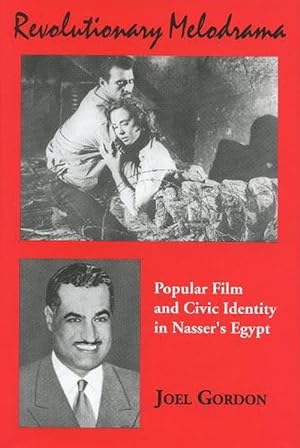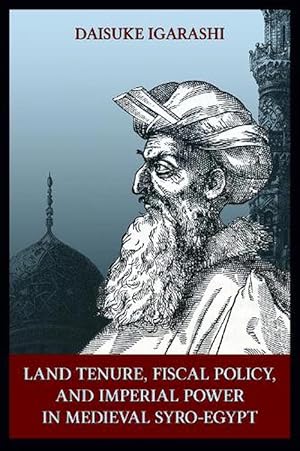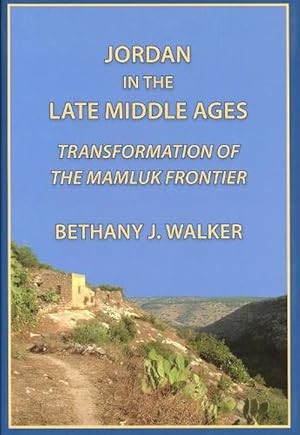university of chicago middle east documentation center il (4 résultats)
Type d'article
- Tous les types d'articles
- Livres (4)
- Magazines & Périodiques
- Bandes dessinées
- Partitions de musique
- Art, Affiches et Gravures
- Photographies
- Cartes
-
Manuscrits &
Papiers anciens
Etat
- Tous
- Neuf
- Ancien ou d'occasion
Reliure
Particularités
- Edition originale
- Signé
- Jaquette
- Avec images
- Sans impression à la demande
Pays
Evaluation du vendeur
-
Imperial Power and Maritime Trade (Paperback)
Edité par University of Chicago, Middle East Documentation Center, IL, 2015
ISBN 10 : 099157320XISBN 13 : 9780991573202
Vendeur : CitiRetail, Stevenage, Royaume-Uni
Livre
Paperback. Etat : new. Paperback. This new paperback is a Revised Edition with new preface. When scholars of Middle Eastern and Islamic history consider Mecca or its region, the Hijaz, they tend to focus on either the first century of Islam, when the city and region became briefly the centre of an incipient empire, or the twentieth, when the city was the centre of the Arab Revolt. More than a thousand years of history in between are relatively unknown. The pre-modern imperial cities of Damascus, Baghdad, and Cairo quickly superseded Mecca as centres of politics and long-distance trade, leaving Islams premier holy city with its singular role as the destination of the great pilgrimage. Of course, the religious significance of Mecca attracted the attention of neighbouring rulers, such as the Mamluk sultans of Cairo, who claimed sovereignty over the city to enhance their reputations as paramount Muslim rulers in the later medieval period. Using sources composed by late medieval Meccan scholars alongside the more well-known Mamluk material, this study presents the history of late medieval Mecca and the Sharifs who ruled the city by examining their relations with local and global forces: their alliances with local groups in the Hijaz, their relations with the imperial centre of Mamluk Cairo, and their reliance on the maritime trade of the Indian Ocean. This new paperback is a Revised Edition with new preface. Using sources composed by late medieval Meccan scholars alongside the more well-known Mamluk material, this study presents the history of late medieval Mecca and the Sharifs who ruled the city. Shipping may be from our UK warehouse or from our Australian or US warehouses, depending on stock availability.
-
Revolutionary Melodrama (Hardcover)
Edité par University of Chicago, Middle East Documentation Center, IL, 2002
ISBN 10 : 0970819900ISBN 13 : 9780970819901
Vendeur : CitiRetail, Stevenage, Royaume-Uni
Livre
Hardcover. Etat : new. Hardcover. Revolutionary Melodrama explores intersections between cinema and politics during the Nasser era, a period in which a military regime embarked upon the construction of a new civic identity for an independent Egypt. The way in which filmmakers participated in this venture provides the focal point, with their cultural production as the central texts which both shaped and were shaped by an emerging sense of a new Egypt. With the blessing of a "revolutionary" regime, filmmakers began to explore issues of social inequity, colonial and feudal exploitation, changing gender roles, religious and cultural traditions and, finally, the disappointments of the revolutionary project itself. No realm of cultural production holds greater import for the Nasser era than the cinema. Even those who are active in deconstructing the last vestiges of the Nasserist state trumpet the Nasser era as a "golden age" of the arts and media. The faces and voices on big and little screens, many still alive, some still working, constitute a pantheon who many Egyptians, young and old alike, feel will never be replaced. The author approaches his subject as a scholar of the early Nasser years who has turned his attention to questions of civic identity and its relationship to art and political symbology. The work is enriched and informed by extensive interviews with a large circle of people engaged in the production or analysis of Egyptian cinema and broadcast, then and now: directors, actors, critics, historians, scenarists, censors, musicians, writers, politicians, and government ministers. Egyptian film remains a largely ignored topic in an ever-growing literature on film and culture. This book sheds new light on what many consider to be the greatest era of Egyptian filmmaking, one that remains formative for many engaged in creating Egyptian films today. Revolutionary Melodrama explores intersections between cinema and politics during the Nasser era, a period in which a military regime embarked upon the construction of a new civic identity for an independent Egypt. Shipping may be from our UK warehouse or from our Australian or US warehouses, depending on stock availability.
-
Land Tenure, Fiscal Policy and Imperial Policy in Medieval Syro-Egypt (Hardcover)
Edité par University of Chicago, Middle East Documentation Center, IL, 2015
ISBN 10 : 0970819994ISBN 13 : 9780970819994
Vendeur : CitiRetail, Stevenage, Royaume-Uni
Livre
Hardcover. Etat : new. Hardcover. This book aims to examine the structural changes in the state and society in Mamluk Egypt and Syria after the middle of the eighth/fourteenth century. Between 648/1250 and 922/1517, the Mamluk sultanate ruled Egypt, Syria, and the Hijaz, the central Middle East. During this period, the sultanate expanded its authority over the medieval Islamic world by defending Muslim society against the Mongols and the Crusades, protecting the two Islamic holy cities of Mecca and Medina, and reinstalling the Abbasid caliphate in Cairo, which had once been rendered extinct by the Mongol invasion of Baghdad in 656/1258. The Mamluk sultanate reached the height of prosperity under the third reign of Sultan al-Nasir Muhammad ibn Qalawun. The scope of the present book is from 741/1341 to 922/1517, that is, the period from the death of Sultan al-Nasir to the year of the sultanate's downfall after the Ottoman conquest of the area, respectively. This has previously been considered to be the "declining period" of the Mamluk sultanate, which suffered acutely from political disturbance and economic struggle . However, the author believes that the period after the middle of the eighth/fourteenth century was an important epoch not only for the historical development of the Mamluk sultanate but also in terms of medieval Islamic history as a whole. This book aims to examine the structural changes in the state and society in Mamluk Egypt and Syria after the middle of the eighth/fourteenth century. Between 648/1250 and 922/1517, the Mamluk sultanate ruled Egypt, Syria, and the Hijaz, the central Middle East. Shipping may be from our UK warehouse or from our Australian or US warehouses, depending on stock availability.
-
Jordan in the Late Middle Ages (Hardcover)
Edité par University of Chicago, Middle East Documentation Center, IL, 2011
ISBN 10 : 0970819978ISBN 13 : 9780970819970
Vendeur : CitiRetail, Stevenage, Royaume-Uni
Livre
Hardcover. Etat : new. Hardcover. The decline of the Mamluk Sultanate from the late fourteenth century is an important component of the larger transformation of the late medieval Levant. In this centralized state, the Mamluks political culture has traditionally been defined by that of the imperial capital of Cairo. The political decline of the sultanate in Cairo has, then, come to define the many-faceted transformations of the entire region with the waning of the medieval era. The dynamics of change far from Cairo, in remote settlements on the imperial frontier, are, by contrast, relatively unknown. This book explores the transformation of the Mamluk state from the perspective of the Jordanian frontier, considering the actions of local people in molding both the state and their own societies in the post-plague era. Through a critical analysis of a wide range of economic and legal documents of the late Mamluk and early Ottoman periods, as well as data on rural society generated by recent archaeological research, the work documents the complex, dialectical relationships that always existed between the Mamluk state and the tribal societies of Jordan, as well as the flexible strategies pursued by both to adapt to changing circumstances during the late medieval period. It is ultimately a provincial perspective on imperial decline, reform, and rebirth that sheds new light on the mechanisms of socio-political and economic change through the experiences of ordinary people living on the margins of empire. The book is illustrated with more than two dozen photographs and 6 maps. This book explores the transformation of the Mamluk state from the perspective of the Jordanian frontier, considering the actions of local people in molding both the state and their own societies in the post-plague era. Shipping may be from our UK warehouse or from our Australian or US warehouses, depending on stock availability.





